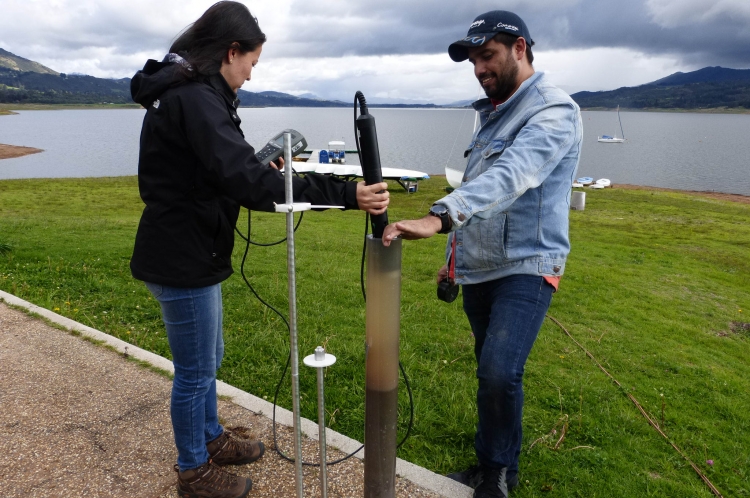Sediments are finely-grained particles, sometimes produced as a by-product of weathering and soil erosion, but often the result of human activities. The presence of sediments can jeopardize water flow and security when rainfall or stream erosion eventually carries them into reservoirs and water systems. These challenges are more pronounced in Colombia, a country which relies on its water resources not only for drinking water, but also for irrigation and energy production. To enhance national capacities to analyse and assess sedimentation rates, the IAEA organized a national training course from 6 to 10 May, in cooperation with the Government of Colombia.
Of Colombia’s 16.8 gigawatts (GW) of installed electricity-generation capacity, the lion’s share is sourced from renewable energy technologies—eight of every 10 megawatt hours of electricity is produced using renewable resources. The secret ingredient responsible for this environmental success is water!
Colombia’s 12 large hydroelectric plants account for approximately 68 per cent of the national energy mix and provide power to nearly 34 million Colombians, and the government plans to construct even more, albeit smaller, hydroelectric facilities. However, anthropogenic activities, the effects of climate change and poor land-use policies have deposited millions of tonnes of sediments into the country’s waterways. The layers of silt and sand affect hydropower by eroding the machinery and slowing the rotation of the turbines. In short, as the water becomes murkier, electricity production is reduced, and the economic and technical feasibility of hydroelectric projects are threatened.
The national training course—hosted by the Antonio Nariño University in Bogotá, Colombia—demonstrated how nuclear and isotopic techniques can facilitate the accurate and precise evaluation of sedimentary processes and how they help to identify hydrological risks in artificial and natural water bodies. Organized under an ongoing, national technical cooperation (TC) project[1] with the support of Colombia’s Ministry of Mines and Energy, the training course focused on sediment sampling for aquatic sediment dating using 210Pb, an isotope of lead which is often deployed for this purpose.
Sediment dating using isotopes allows researchers to examine the history of sediment dispersal, and to identify its source and the pattern of its deposition into nearby bodies of water. The project was designed to support existing monitoring programmes used by construction companies and hydropower operators to observe and react to the fluctuating level of sediments in reservoirs and rivers, and ultimately to ensure the sustainable management of water resources and hydroelectric energy efficiency.





